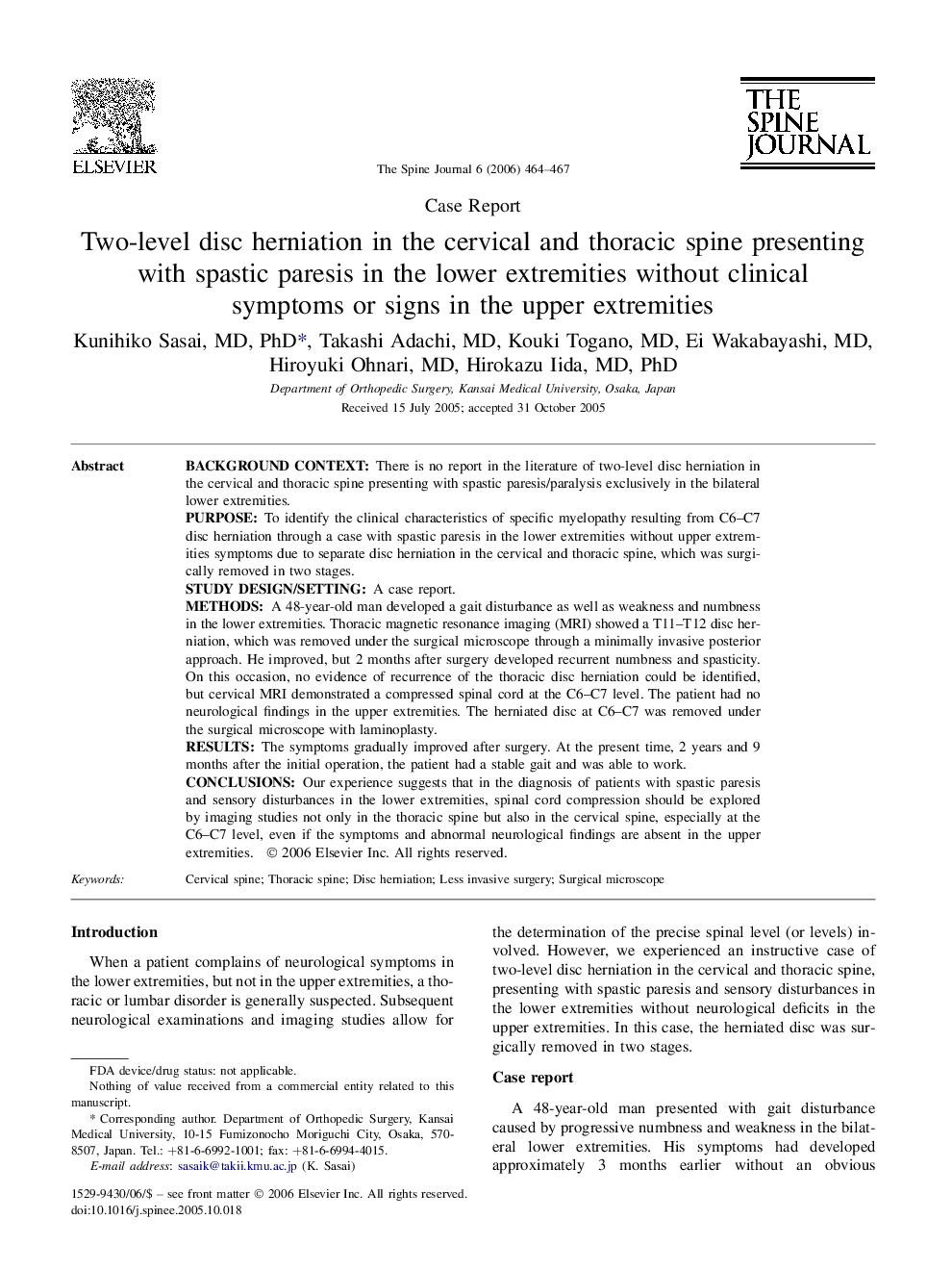| Article ID | Journal | Published Year | Pages | File Type |
|---|---|---|---|---|
| 4100321 | The Spine Journal | 2006 | 4 Pages |
Background contextThere is no report in the literature of two-level disc herniation in the cervical and thoracic spine presenting with spastic paresis/paralysis exclusively in the bilateral lower extremities.PurposeTo identify the clinical characteristics of specific myelopathy resulting from C6–C7 disc herniation through a case with spastic paresis in the lower extremities without upper extremities symptoms due to separate disc herniation in the cervical and thoracic spine, which was surgically removed in two stages.Study design/settingA case report.MethodsA 48-year-old man developed a gait disturbance as well as weakness and numbness in the lower extremities. Thoracic magnetic resonance imaging (MRI) showed a T11–T12 disc herniation, which was removed under the surgical microscope through a minimally invasive posterior approach. He improved, but 2 months after surgery developed recurrent numbness and spasticity. On this occasion, no evidence of recurrence of the thoracic disc herniation could be identified, but cervical MRI demonstrated a compressed spinal cord at the C6–C7 level. The patient had no neurological findings in the upper extremities. The herniated disc at C6–C7 was removed under the surgical microscope with laminoplasty.ResultsThe symptoms gradually improved after surgery. At the present time, 2 years and 9 months after the initial operation, the patient had a stable gait and was able to work.ConclusionsOur experience suggests that in the diagnosis of patients with spastic paresis and sensory disturbances in the lower extremities, spinal cord compression should be explored by imaging studies not only in the thoracic spine but also in the cervical spine, especially at the C6–C7 level, even if the symptoms and abnormal neurological findings are absent in the upper extremities.
